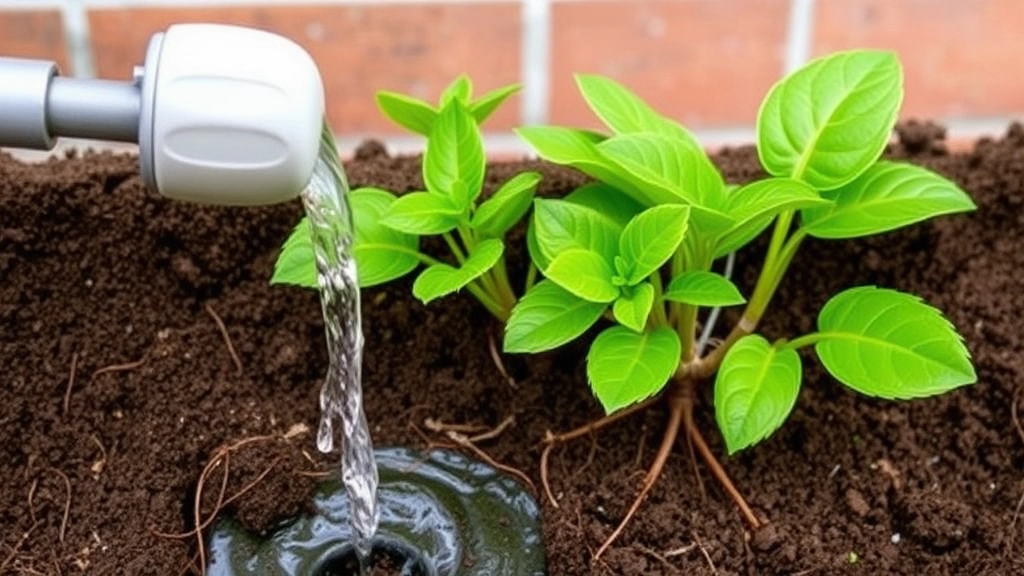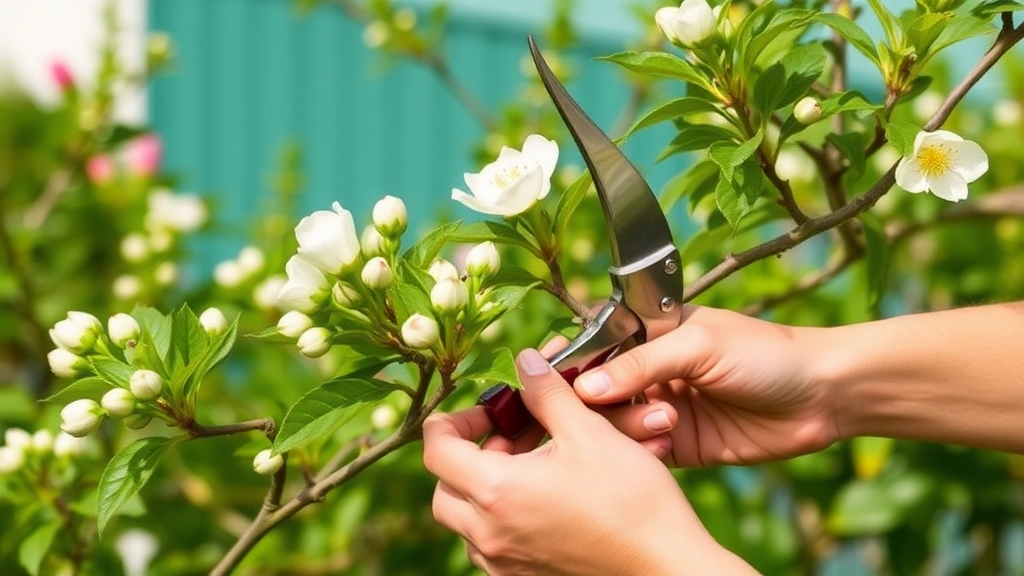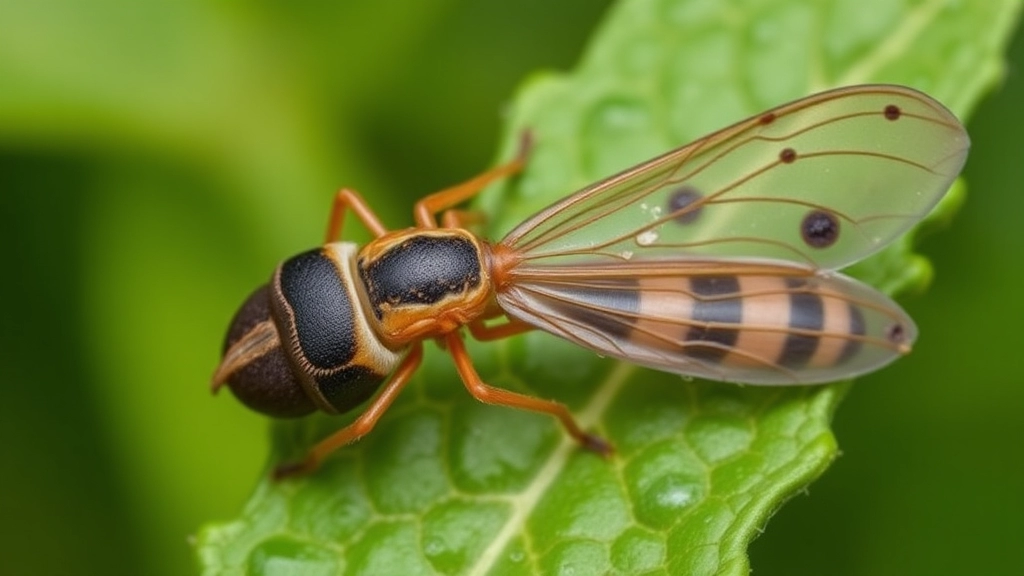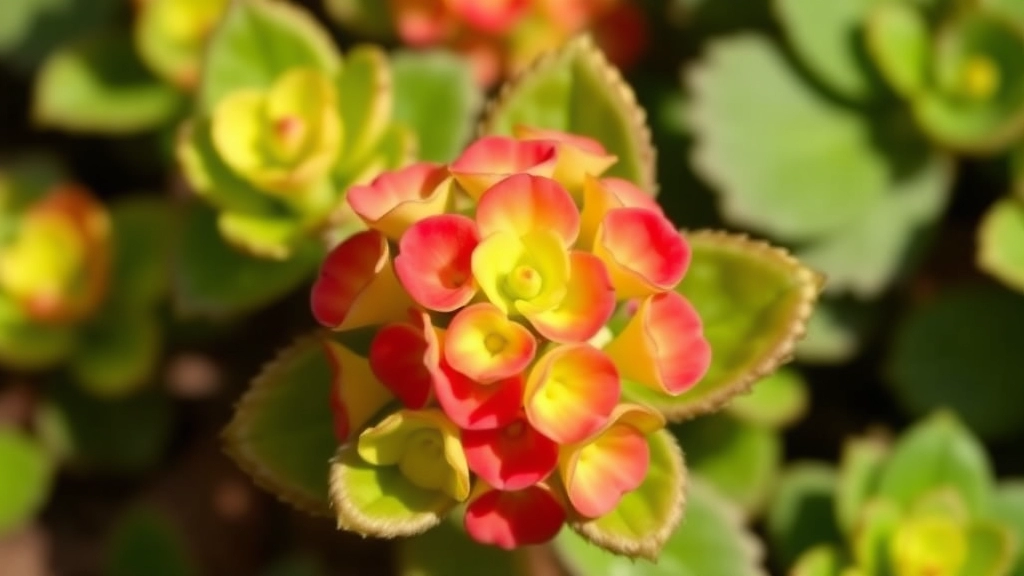Growing Kalanchoe: A Guide
Light Requirements
When it comes to learning how to grow Kalanchoe, the first step is understanding its light requirements. Kalanchoe thrives in bright, indirect sunlight, making it perfect for a sunny windowsill. Too much direct sunlight can scorch the leaves, while too little light can result in leggy growth.
Watering Tips
Watering your Kalanchoe correctly is crucial to avoid root rot. Allow the soil to dry out completely between waterings, and ensure your pot has good drainage. Overwatering is a common mistake, so it’s better to err on the side of caution. Use a well-draining soil mix, ideally a cactus or succulent blend, to keep your Kalanchoe happy and healthy.
Optimal Light Conditions for Kalanchoe
Are you struggling to get your Kalanchoe to thrive? One of the most crucial factors for its success is light.
Kalanchoe, a popular succulent known for its vibrant blooms, thrives in bright, indirect sunlight. Here’s what you need to know:
- Direct Sunlight: While Kalanchoe can tolerate some direct sunlight, too much can scorch its leaves. Ideally, aim for 6 hours of bright, indirect light daily.
- Artificial Light: If natural light is limited, consider using grow lights. Position them about 12 inches above the plant for optimal growth.
- Signs of Insufficient Light: If you notice elongated stems or sparse leaves, your Kalanchoe may be reaching for more light. This condition, known as etiolation, can be remedied with proper lighting.
- Rotation: Rotate your plant every few weeks to ensure even growth and prevent it from leaning toward the light source.
By providing the right light conditions, you’ll set the stage for a healthy, blooming Kalanchoe. For more detailed information, you can refer to our guide on fixing etiolated Kalanchoe and other care tips for Kalanchoe Flaming Katy.
Watering Requirements: Avoiding Root Rot

So, you’ve got your Kalanchoe and you’re pumped to see it thrive. But let’s chat about one of the biggest worries for plant lovers: watering.
How Much Water is Too Much?
Kalanchoe is a succulent, which means it’s designed to store water in its leaves. This makes it pretty forgiving, but overwatering can lead to root rot, and that’s a nightmare we want to avoid.
Here’s how to keep your plant happy:
- Check the Soil: Before you water, poke your finger about an inch into the soil. If it feels dry, it’s time to give it a drink.
- Water Deeply, But Sparingly: When you do water, make sure to soak the soil thoroughly. Let it drain completely so the roots aren’t sitting in water.
- Seasonal Adjustments: In the warmer months, you might need to water more often. In winter, scale back since the plant is resting.
Signs of Overwatering
Keep an eye out for these red flags:
- Yellowing leaves
- Mushy stems
- A foul smell from the soil
If you spot these, it’s time to reassess your watering schedule.
Tips to Avoid Root Rot
- Use Well-Draining Soil: A mix designed for succulents helps prevent excess moisture.
- Choose the Right Pot: Make sure your pot has drainage holes. This is crucial for letting excess water escape.
By keeping an eye on your watering habits, you’ll set your Kalanchoe up for success.
Best Soil Mix for Kalanchoe Growth
Choosing the right soil mix is essential for the thriving growth of your Kalanchoe.
Are you worried about your plant’s health due to poor soil conditions?
Kalanchoes prefer well-draining soil that mimics their natural habitat.
Here are some key components to consider when creating the ideal soil mix:
- Cactus Mix: Start with a high-quality cactus potting mix. This type is designed to provide excellent drainage, preventing water retention.
- Perlite: Mix in perlite to improve aeration and drainage. A ratio of 1 part perlite to 2 parts cactus mix works wonders.
- Sand: Adding coarse sand can further enhance drainage. Aim for a mix that includes about 10-20% sand.
- Organic Matter: Incorporate a small amount of organic compost to provide essential nutrients without compromising drainage.
By combining these elements, you create an environment that allows for healthy root development and prevents issues like root rot.
Remember, Kalanchoes thrive in slightly acidic to neutral soil, with a pH level between 6.0 and 7.0.
To learn more about caring for your Kalanchoe, check out our Comprehensive Kalanchoe Plant Care Guide. Additionally, if you’re interested in propagation techniques, our Guide on Propagating Kalanchoe Blossfeldiana Cuttings offers step-by-step instructions.
Temperature and Humidity Preferences

When caring for your Kalanchoe, understanding its temperature and humidity needs is crucial for vibrant growth and blooming. Have you ever wondered why your Kalanchoe isn’t thriving? It might be a temperature issue.
Ideal Temperature Range:
- Kalanchoe prefers a warm environment.
- The optimal temperature is between 18°C to 24°C (65°F to 75°F).
- Avoid exposing your plant to temperatures below 10°C (50°F), as this can stunt its growth or even kill it.
Humidity Levels:
- Kalanchoe thrives in low to moderate humidity.
- Aim for humidity levels around 40% to 60%.
- If your home is particularly dry, consider using a humidifier or placing a tray of water near your plant to boost moisture.
Tips for Maintaining Ideal Conditions:
- Keep your Kalanchoe away from drafty windows or doors.
- Avoid placing it near heating vents or air conditioning units.
- Monitor the temperature regularly, especially during seasonal changes.
V. Fertilizing Tips for Healthier Blooms
After ensuring your Kalanchoe is thriving in optimal light and proper watering, it’s time to focus on fertilization for those vibrant blooms.
Many plant enthusiasts often wonder, âHow can I make my Kalanchoe bloom more profusely?â The answer lies in the right fertilization strategy.
When to Fertilize:
- Growing Season: Fertilize during the growing season, typically spring and summer.
- Frequency: Every 4-6 weeks is ideal, but avoid over-fertilizing.
Choosing the Right Fertilizer:
- Balanced Fertilizer: A balanced, water-soluble fertilizer (such as 10-10-10) works wonders.
- Low Nitrogen: Opt for a formula lower in nitrogen to promote flowering rather than foliage growth.
Application Tips:
- Dilution: Always dilute the fertilizer to half the recommended strength to prevent root burn.
- Watering First: Water your Kalanchoe before applying fertilizer to help the plant absorb nutrients effectively.
Signs of Nutrient Deficiency:
- Yellowing Leaves: This can indicate a lack of essential nutrients.
- Poor Blooming: If your Kalanchoe isn’t flowering, it may need a nutrient boost.
By following these fertilizing tips, you can encourage healthier blooms and a more vibrant Kalanchoe. For more detailed guidance, you might want to explore our flowering Kalanchoe care tips or learn about how to make Kalanchoe bloom all summer.
Pruning for Shape and Bloom Promotion

So, you’ve got your Kalanchoe looking good, but are you giving it the right shape and encouraging those beautiful blooms?
Pruning is key! It’s not just about keeping your plant tidy; it’s about enhancing its growth and flowering potential.
Here’s how to do it right:
- When to Prune: The best time to prune your Kalanchoe is after it has finished blooming. This helps the plant focus its energy on new growth instead of spent flowers.
- Tools You’ll Need: Grab a pair of sharp, clean scissors or pruning shears. Clean cuts prevent disease.
- What to Cut:
- Remove dead or wilted flowers to keep the plant looking fresh.
- Trim back leggy stems to encourage bushier growth. Aim to cut just above a leaf node.
- If your plant is getting too tall, don’t be afraid to take off some length!
- How Much to Prune: Aim to remove about one-third of the plant at a time. This keeps it healthy without shocking it.
Pruning isn’t just about aesthetics; it can also stimulate new blooms. When you cut back old growth, you’re encouraging your Kalanchoe to produce new flowers.
And remember, a well-pruned plant is not only healthier but also more attractive.
Propagation Methods: Cuttings and Offsets
Have you ever wondered how to multiply your Kalanchoe collection without breaking the bank? Propagation is an exciting way to expand your garden while ensuring you maintain healthy plants. Let’s dive into the most effective methods: cuttings and offsets.
Propagating Kalanchoe from Cuttings
Cuttings are a straightforward method to propagate Kalanchoe. Here’s how you can do it successfully:
- Select a Healthy Stem: Choose a stem that is robust and free from any disease.
- Make the Cut: Using clean, sharp scissors, cut a 3-4 inch section of the stem just below a leaf node.
- Let it Callous: Place the cutting in a dry, shaded area for a few days. This allows the cut end to callous over, reducing the risk of rot.
- Prepare the Soil: Use a well-draining soil mix, ideally a cactus or succulent blend.
- Plant the Cutting: Insert the calloused end into the soil, ensuring it is stable.
- Water Sparingly: Mist the soil lightly, but avoid overwatering. This will encourage root development without risking root rot.
Propagating Kalanchoe from Offsets
Offsets are another excellent way to propagate your Kalanchoe. Here’s how to do it:
- Identify Offsets: Look for small plantlets growing at the base of the parent plant.
- Gently Remove: Carefully separate the offset from the main plant, ensuring some roots are attached.
- Let it Dry: Similar to cuttings, allow the offset to dry for a few hours to develop a callous.
- Plant in Soil: Place the offset in a well-draining soil mix, just like with cuttings.
- Water Lightly: Give it a light misting to settle the soil, but keep it dry initially to promote healthy root growth.
Both methods can be rewarding and are great ways to share your Kalanchoe with friends or expand your own collection. For more detailed steps, you can refer to this Kalanchoe Mother of Thousands Propagation Guide. Additionally, if you are curious about the different types of Kalanchoe, check out this guide on Kalanchoe Daigremontiana.
Common Pests and Diseases to Watch Out For

So, you’ve got your Kalanchoe thriving, but what happens when those pesky pests or sneaky diseases decide to crash the party?
Here’s what you need to know:
- Mealybugs: These little white fluffballs love to hide in the leaf joints. They suck the sap from your plant, leading to wilting. A simple wipe with a cotton swab dipped in alcohol can help get rid of them.
- Aphids: Tiny and green, aphids can be a real nuisance. They multiply quickly and cause leaves to curl. A strong spray of water can dislodge them, or you can use insecticidal soap.
- Spider Mites: If you notice tiny webs on your Kalanchoe, it might be spider mites. They thrive in dry conditions. Increasing humidity or using a miticide can help control them.
- Fungal Issues: Overwatering can lead to root rot and fungal diseases. Keep an eye out for yellowing leaves or mushy stems. If you spot these, cut back on watering and ensure good drainage.
- Powdery Mildew: This white, powdery substance can appear on leaves, especially in humid conditions. Improve air circulation around your plant and avoid overhead watering to prevent this.
Prevention Tips:
- Regular Checks: Make it a habit to inspect your Kalanchoe weekly. Early detection is key.
- Clean Environment: Keep the area around your plant clean. Remove fallen leaves and debris.
- Proper Care: Stick to the watering and light guidelines. Healthy plants are less susceptible to pests and diseases.
Have you ever wondered why your Kalanchoe seems to lose its vibrant blooms?
Reblooming this resilient succulent requires a bit of seasonal care and attention.
## Understanding the Bloom Cycle
Kalanchoe plants typically bloom in the winter to early spring.
To encourage a second bloom, it’s essential to mimic their natural cycle.
### 1. Light Management
– **Shorten Daylight Hours**: Kalanchoe needs about 14-16 hours of darkness daily for at least six weeks.
– **Bright Indirect Light**: During the day, ensure they receive bright, indirect sunlight to promote healthy growth.
### 2. Watering Adjustments
– **Reduce Watering**: Cut back on watering after the initial bloom.
– **Check Soil Moisture**: Allow the top inch of soil to dry out before watering again.
### 3. Temperature Control
– **Keep it Cool**: Maintain a temperature of around 15-18°C (59-65°F) during the dark period.
– **Avoid Drafts**: Ensure your plant is not exposed to cold drafts or sudden temperature changes.
### 4. Fertilizing Wisely
– **Use a Balanced Fertilizer**: After the blooming period, feed your Kalanchoe with a balanced, water-soluble fertiliser every month.
– **Dilute Fertilizer**: Always dilute the fertiliser to half-strength to avoid root burn.
### 5. Pruning for New Growth
– **Remove Spent Blooms**: Cut back old flowers and any leggy growth to encourage new shoots.
– **Shape the Plant**: Pruning helps maintain shape and promotes bushier growth.
### 6. Patience is Key
– **Wait for New Buds**: After following these steps, be patient. New buds may take time to form.
– **Observe Changes**: Keep an eye on your plant for signs of new growth.
For more detailed guidance on post-flowering care, check out [postflowering care tips for Kalanchoe](https://planthq.org/postflowering-care-tips-for-kalanchoe/). Additionally, if you are struggling with non-flowering plants, our article on [why your Kalanchoe isn’t flowering](https://planthq.org/why-your-kalanchoe-isnt-flowering-causes-and-solutions/) offers practical solutions.
FAQs on How to Grow Kalanchoe
What are the watering requirements for Kalanchoe?
Kalanchoe is a succulent, so it stores water in its leaves. It’s important to water deeply but sparingly, ensuring the soil dries out between waterings to avoid root rot.
How can I tell if I’m overwatering my Kalanchoe?
Signs of overwatering include yellowing leaves, mushy stems, and a foul smell from the soil. If you notice these, reassess your watering schedule.
What type of soil is best for Kalanchoe?
Use well-draining soil, preferably a mix designed for succulents, to prevent excess moisture and root rot.
What is the ideal temperature range for Kalanchoe?
Kalanchoe thrives in a warm environment with temperatures between 18°C to 24°C (65°F to 75°F). Avoid temperatures below 10°C (50°F).
What humidity levels do Kalanchoe prefer?
Kalanchoe prefers low to moderate humidity, ideally around 40% to 60%. If your home is particularly dry, consider using a humidifier or placing a tray of water near the plant.
When is the best time to prune Kalanchoe?
The best time to prune Kalanchoe is after it has finished blooming. This helps the plant focus its energy on new growth.
How should I prune my Kalanchoe?
Use sharp, clean scissors or pruning shears to remove dead or wilted flowers and trim back leggy stems. Aim to remove about one-third of the plant at a time.
What pests should I watch out for with Kalanchoe?
Common pests include mealybugs, aphids, and spider mites. Regularly inspect your plant and use appropriate treatments like alcohol wipes, insecticidal soap, or miticides to control these pests.
How can I prevent fungal issues in my Kalanchoe?
Prevent fungal issues by avoiding overwatering and ensuring good drainage. Keep an eye out for yellowing leaves or mushy stems and adjust your care routine accordingly.
What should I do if I see powdery mildew on my Kalanchoe?
Improve air circulation around your plant and avoid overhead watering to prevent powdery mildew. If it appears, adjust the environment to reduce humidity.
How often should I inspect my Kalanchoe for pests and diseases?
Make it a habit to inspect your Kalanchoe weekly. Early detection is key to preventing and addressing issues effectively.
References
-
Kalanchoe Plant Care Guide: How to Grow Kalanchoe
-
Kalanchoe Plant Care â How To Grow A Flowering Kalanchoe
-
Kalanchoe: How to Grow and Care for Kalanchoe Plants
